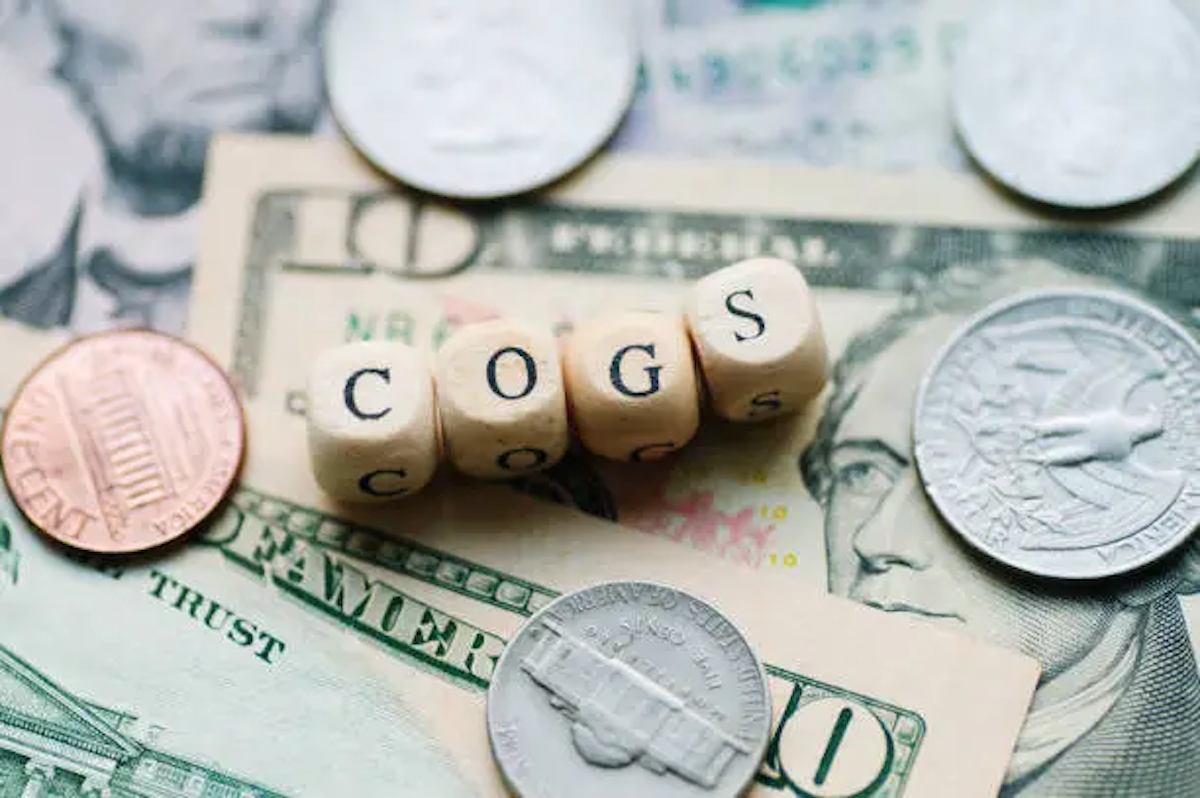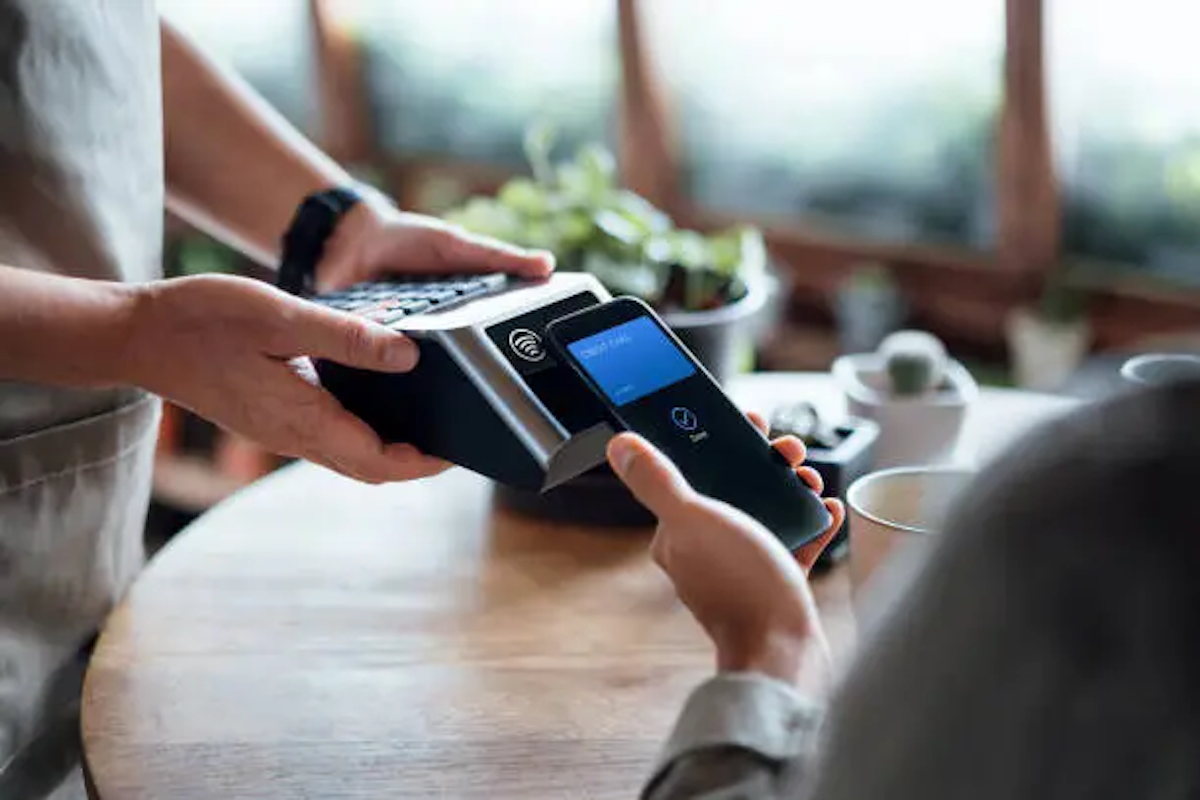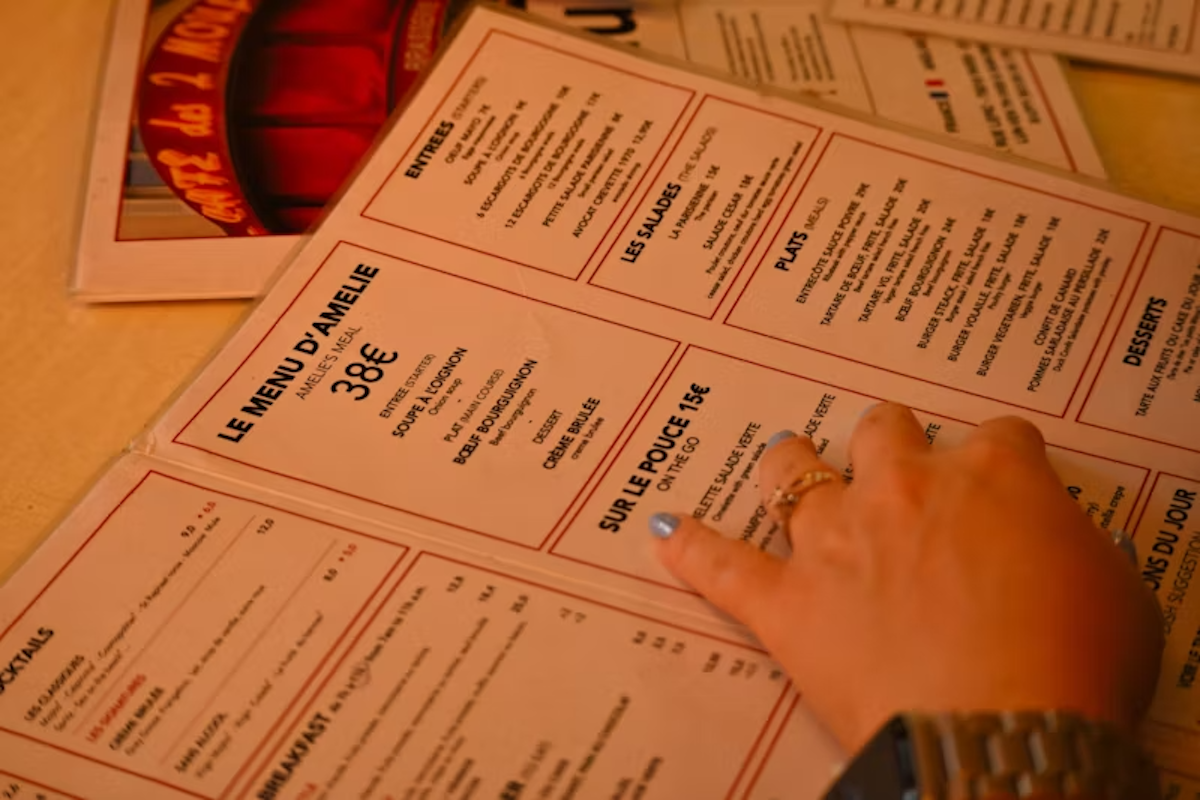What are the Average Restaurant Sales per Month by Category?
Breaking down average restaurant sales per month gives restaurant owners, managers, and investors a clearer view of how the business is performing....
Platform
Combining online ordering, loyalty, omnichannel messaging, AI insights, and payments in one platform. Paytronix delivers relevant, personal experiences, at scale, that help improve your entire digital marketing funnel by creating amazing frictionless experiences.
A Complete Customer Experience Platform
Online Ordering
Acquire new customers and capture valuable data with industry leading customization features.
Loyalty
Encourage more visits and higher spend with personalized promotions based on individual activity and preferences.
Catering
Grow your revenue, streamline operations, and expand your audience with a suite of catering tools.
CRM
Build great customer relationships with relevant personal omnichannel campaigns delivered at scale.
Artificial Intelligence
Leverage the most data from the most customer transactions to power 1:1 marketing campaigns and drive revenue.
Payments
Drive brand engagement by providing fast, frictionless guest payments.
Solutions
We use data, customer experience expertise, and technology to solve everyday restaurant and convenience store challenges.
Contactless Experiences
Accommodate your guests' changing preferences by providing safe, efficient service whether dining-in or taking out.
Customer Insights
Collect guest data and analyze behaviors to develop powerful targeted campaigns that produce amazing results.
Marketing Automation
Create and test campaigns across channels and segments to drive loyalty, incremental visits, and additional revenue.
Mobile Experiences
Provide convenient access to your brand, menus and loyalty program to drive retention with a branded or custom app.
Subscriptions
Create a frictionless, fun way to reward your most loyal customers for frequent visits and purchases while normalizing revenues.
Employee Dining
Attract and retain your employees with dollar value or percentage-based incentives and tiered benefits.
Order Experience Builder
Create powerful interactive, and appealing online menus that attract and acquire new customers simply and easily.
Loyalty Programs
High-impact customizable programs that increase spend, visit, and engagement with your brand.
Online Ordering
Maximize first-party digital sales with an exceptional guest experience.
Integrations
Launch your programs with more than 450 existing integrations.
Loyalty Programs
Deliver the same care you do in person with all your digital engagements.
Online Ordering
Drive more first-party orders and make it easy for your crew.
Loyalty Programs
Digital transformations start here - get to know your guests.
Online Ordering
Add a whole new sales channel to grow your business - digital ordering is in your future.
Integrations
We work with your environment - check it out.
Company
We are here to help clients build their businesses by delivering amazing experiences for their guests.
Meet The Team
Our exceptional customer engagement innovations are delivered by a team of extraordinary people.
News/Press
A collection of press and media about our innovations, customers, and people.
Events
A schedule of upcoming tradeshows, conferences, and events that we will participate in.
Careers
Support
Paytronix Login
Order & Delivery Login
Resources
Learn how to create great customer experiences with our free eBooks, webinars, articles, case studies, and customer interviews.
FlightPaths are structured Paytronix software onboarding journeys designed to simplify implementation and deliver maximum ROI.
See Our Product In Action
E-Books
Learn more about topics important to the restaurant and c-store customer experience.
Reports
See how your brand stacks up against industry benchmarks, analysis, and research.
Blog
Catch up with our team of in-house experts for quick articles to help your business.
Case Studies
Learn how brands have used the Paytronix platform to increase revenue and engage with guests.
Is your brand tapping into these three unshakeable pillars of guest loyalty in 2025?
7 min read
Apr 23, 2025

Understanding the cost of goods sold (COGS) is crucial for maintaining healthy profit margins in both restaurants and convenience stores (c-stores). Effectively managing COGS helps you track inventory costs, minimize waste, and optimize pricing strategies to ensure long-term profitability. This guide outlines the key steps to calculate, record, and manage COGS with industry-specific formulas and best practices. 
Cost of goods sold refers to the direct costs incurred by your business to produce or acquire the products you sell. For restaurants and c-stores, COGS typically includes the cost of raw materials or finished goods (like food ingredients, beverages, and other retail products) sold to customers.
COGS differs from other business expenses, such as direct labor and overhead, which are not directly tied to the production of goods sold. For example, labor costs refer to wages, while overhead encompasses things like utilities and rent. COGS is vital because it directly influences pricing, profit margins, and financial reporting, enabling you to optimize profitability and better assess overall performance.
Calculating COGS accurately is essential for understanding your business’s financial health. Here is the COGS formula:
COGS = Beginning Inventory + Purchases – Ending Inventory
This straightforward formula accounts for your starting inventory, any purchases made during the period, and the value of what remains at the end. The result shows the cost of the goods that were sold or used during that time.
For restaurants and c-stores, this formula applies to the inventory sold throughout the month or year. However, to get an accurate representation of COGS, adjustments must be made for perishable goods, shrinkage, and spoilage.
To account for perishables, estimate the amount of spoilage and inventory that expired or was not sold. Then, adjust the ending inventory accordingly. For shrinkage, track losses from theft or damage and factor these into the purchases or inventory levels, ensuring a more precise calculation of COGS.
To calculate COGS for your restaurant, begin by tracking food and beverage inventory consistently. Here are three steps to track your inventory:
Wherever possible, use point-of-sale (POS) systems and inventory software to track COGS automatically. These tools streamline the process by providing real-time updates on sales, inventory levels, and stock management, ensuring more accurate and timely COGS calculations.
Industry benchmarks for COGS percentages vary based on the restaurant type:
Understanding COGS in different types of restaurants helps operators tailor their pricing and cost management strategies. Here are sample COGS calculations for a full-service restaurant, a fast food chain, and a coffee shop:
For a full-service restaurant, the COGS might include the cost of ingredients for appetizers, entrees, and desserts, as well as beverages. For example, if the restaurant starts with $5,000 in inventory, purchases $10,000 in ingredients throughout the month, and ends with $4,000 in inventory, the COGS would be calculated as:
COGS = $5,000 + $10,000 – $4,000 = $11,000
This means $11,000 worth of food was used or sold during the month.
In a fast-food chain, the COGS would typically include the cost of ingredients used to prepare standardized menu items such as burgers, fries, and sodas. Suppose the fast-food chain starts with $3,000 in inventory, purchases $7,000 in supplies, and ends with $2,000 in inventory. The calculation would be:
COGS = $3,000 + $7,000 – $2,000 = $8,000
This indicates $8,000 worth of products were sold during the period.
In a coffee shop, the cost of goods sold includes the direct costs of ingredients such as coffee beans, milk, syrups, and pastries. If the coffee shop begins with $1,000 in inventory, purchases $2,500 in supplies, and ends with $500 in inventory, the COGS calculation would be:
COGS = $1,000 + $2,500 – $500 = $3,000
In this case, $3,000 worth of goods were sold during the month.
To effectively manage COGS, break down costs by category: proteins, dairy, produce, dry goods, and beverages. Proteins, such as meat and seafood, typically make up a large portion of COGS. Dairy products like cheese, milk, and cream are another substantial category, with prices that fluctuate due to seasonality and supply chain dynamics.
Produce costs, which include fresh fruits and vegetables, vary seasonally and require careful planning to minimize waste, while dry goods like pasta and canned items are more stable. Finally, beverages, especially alcoholic ones, have a significant impact on profitability, and managing inventory and pricing strategies here is crucial to maintaining an optimal COGS.
Taco Del Mar, a popular Mexican fast-casual restaurant chain, successfully reduced its COGS by 3% across multiple locations by implementing an automated inventory management system. Owner Brian Scott streamlined operations by replacing manual inventory tracking with automated processes, significantly cutting down on waste and spoilage.
This efficiency not only saved time, reducing inventory management from 1.5 hours to just 20 minutes per week, but also improved data accuracy, enabling more informed pricing adjustments.
Accurate inventory tracking is essential to calculate cost of goods sold (COGS) effectively. By consistently recording beginning inventory, inventory purchases, and ending inventory for each accounting period, you minimize errors and determine the actual cost of goods sold with greater precision.
To gain deeper insights, break down COGS by ingredient, menu item, and supplier to better control food costs and improve profitability. By tracking the raw materials used for each menu item and associating inventory costs with individual dishes, you have more control over food costs and improving profitability.
The impact of seasonality should also be considered when calculating COGS, as local seasonal ingredients may fluctuate in price. To stay profitable, regularly review your inventory values and adjust menu pricing to reflect current food costs.
Accurately recording COGS is vital for proper financial planning and tax purposes. Best practices for recording COGS in accounting systems involve accurately categorizing inventory purchases, tracking food inventory and waste separately, and regularly updating the inventory valuation method. This way, you can make sure that all raw materials and inventory sold are accounted for.
COGS plays a significant role in financial statements, specifically in the income statement, as it determines your gross profit. By subtracting COGS from total sales, you can assess your profitability and identify areas for improvement. Additionally, accurate COGS recording is essential for tax purposes, allowing for proper deductions related to inventory costs, storage costs, and any additional costs like labor costs that contribute to the production of goods sold.
Reducing COGS doesn’t have to mean cutting corners or sacrificing quality. With the right strategies, you can lower inventory costs and food waste while still delivering value to customers.
Effective menu engineering and recipe costing can significantly reduce food costs without impacting quality. Best practices include enforcing strict portion control, which ensures consistency and keeps inventory sold aligned with projections. By analyzing sales data, you can identify low-performing menu items, adjust menu pricing, and strike a balance between high-margin and low-margin dishes—ultimately boosting your company's gross profit and keeping COGS in check.
Strategic supplier negotiations can lead to reduced ingredient costs and improved inventory management. You can lower your cost of goods sold by negotiating long-term pricing agreements, leveraging bulk purchasing, and sourcing local seasonal ingredients. Maintain strong vendor relationships to secure stable pricing and ensure reliable, on-time deliveries.
Proper inventory management is critical to reducing waste, spoilage, and losses due to theft. Implementing first in, first out (FIFO) practices helps move purchased inventory before expiration, while regular inventory counts can highlight overstocking issues. You can even use AI-powered tools to forecast demand, optimize orders, and track inventory sold in real time. This helps you make smarter purchasing decisions and minimize all the costs tied to food inventory.
COGS plays a crucial role in your restaurant or c-store’s profitability. Below are answers to some frequently asked questions regarding COGS and how it affects your business operations.
The cost of goods sold for restaurants and c-stores includes associated costs of products sold during a particular period, such as beverage costs, food ingredients, and packaging. It covers direct costs like raw materials and labor used in food preparation, plus food waste from spoilage or errors. Cash discounts from suppliers and distribution costs may also be included.
COGS excludes indirect expenses like rent or administrative costs. Make sure you track your costs accurately, so you can calculate gross profit and use competitive pricing to maintain an ideal food cost in the restaurant industry.
COGS do not appear directly on the balance sheet but are reported on the company's income statement. It falls under operating expenses, reflecting the total cost of goods sold in a particular period.
On the balance sheet, remaining inventory (unsold goods) is listed as a current asset. Note that using different accounting methods like the average cost method or last in first out affects inventory valuation.
No, you don’t pay taxes directly on COGS. COGS, which includes costs like ingredients and packaging for units sold, is subtracted from revenue to calculate gross profit, lowering your taxable income.
The business incurs these expenses, and accurate tracking using methods like the weighted average ensures proper tax reporting. This reduces the overall restaurant cost subject to tax, helping you manage variable costs and maintain profitability without paying taxes on COGS itself.
The cost of goods sold is part of the net income calculation but isn’t directly added to it. On the income statement, COGS is deducted from revenue to find gross profit, which is then reduced by expenses like labor or indirect costs to determine net income. By carefully managing your restaurant’s COGS, you can control costs and improve profitability.
Inventory is not typically claimed as overhead costs but is included in the cost of goods sold instead. Overhead costs cover fixed costs like rent or office supplies, not direct costs like inventory.
In rare cases, storage expenses might be considered manufacturing overhead, but inventory remains separate. For income tax purposes, keep your inventory costs separate from overhead costs. This helps with accurate financial reporting and proper tax deductions.
The average overhead cost for small businesses, like restaurants or c-stores, typically ranges from 20-35% of revenue. These fixed costs include rent, utilities, and office supplies, but not the cost of goods sold.
Controlling overhead costs is crucial to maintaining profitability, especially when you have a high COGS ratio. By managing expenses and optimizing menu prices, you can reduce overall costs and drive profitability.
In today’s competitive restaurant and c-store landscape, understanding, tracking, and optimizing your COGS is crucial for maintaining strong profit margins. Ultimately, long-term profitability comes from finding the right balance between cost control and quality.
To control your costs better, leverage data, embrace the right technology, and build strong supplier relationships. See how Paytronix simplifies COGS optimization with data-driven solutions—request a demo today! 

Breaking down average restaurant sales per month gives restaurant owners, managers, and investors a clearer view of how the business is performing....

Understanding the cost of goods sold (COGS) is crucial for maintaining healthy profit margins in both restaurants and convenience stores (c-stores)....

Menu engineering is a proven strategy to increase restaurant profitability. By analyzing sales data, you can refine your offerings to focus on...